Pimcore series: CMS - powerful and easy-to-use CMS platform
Having a lot of content on your website and want to manage multi-site, multi-lingual, and mobile-friendly content?
Bear with us and learn about the best content management system that can change your whole business!
What is CMS?
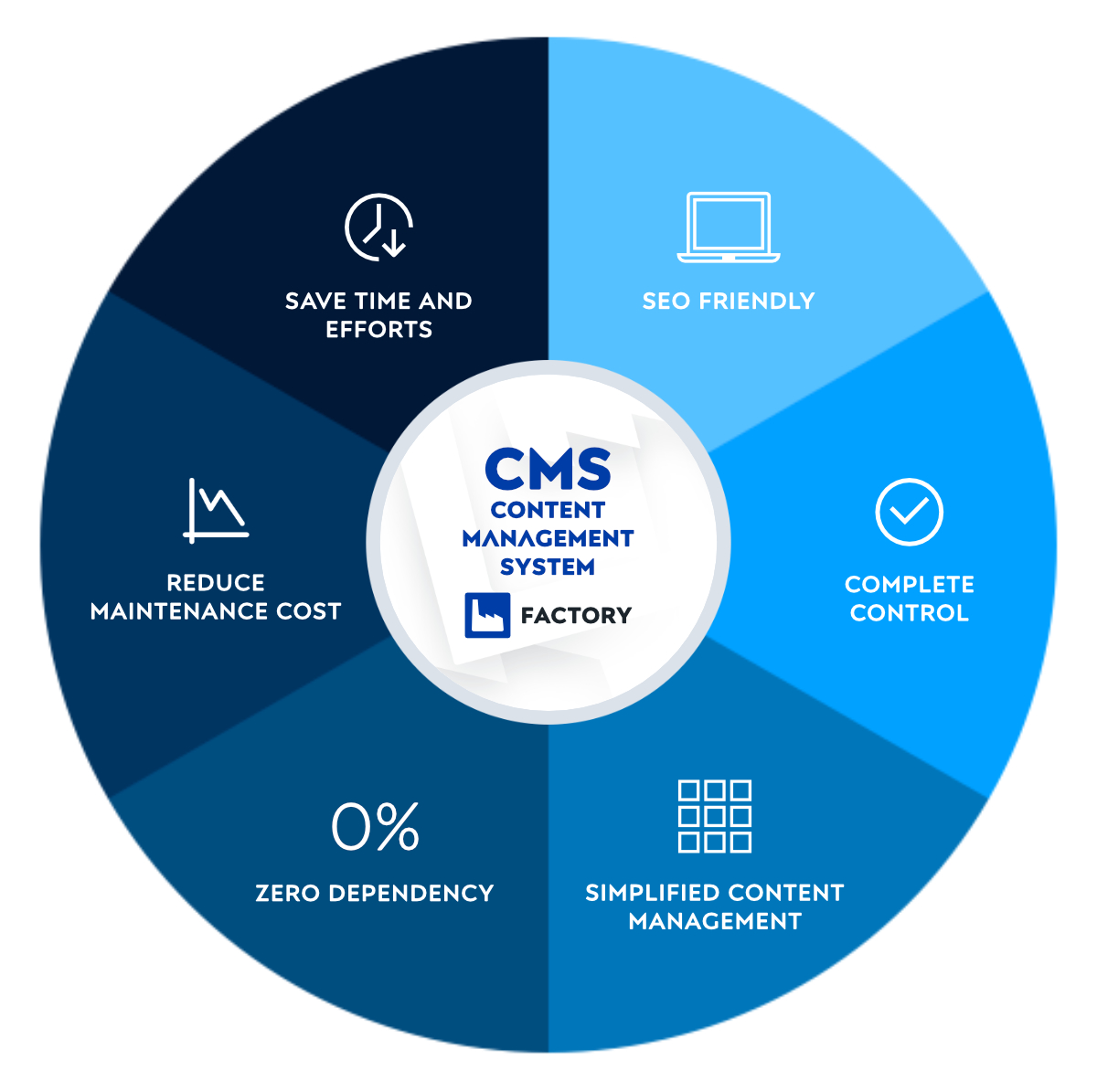
To start off, let’s define what is a CMS. According to Kinsta; content management system, or often called CMS, is a software that helps users create, manage, and modify content on a website without needing some specialized technical knowledge.
Or simply said, CMS is a tool you can use to build a website without writing all the code from scratch.
It simplifies the whole process of content creation. With CMS, there is no need to write static HTML files and upload it to your server. No need to complicate.
A great CMS does more than that.
Pagely team has named some benefits of using CMS. Some important aspects of CMS which will benefit you are:
- Extensibility – you can add functionalities and make design decisions without needing to work with any of the underlying code
- Media management – you can upload media content and embed videos into your content and you don’t need to work directly with your web server.
- User management – you can control who can access your website and what can they do on your website (different levels of access)
- Version control – you have a clear view on history of edits on your website
In essence, the biggest benefit of using a CMS is how it simplifies managing content.
So, what makes Pimcore stand out as a unique CMS?
Let’s find out!
Why is Pimcore’s CMS unique?
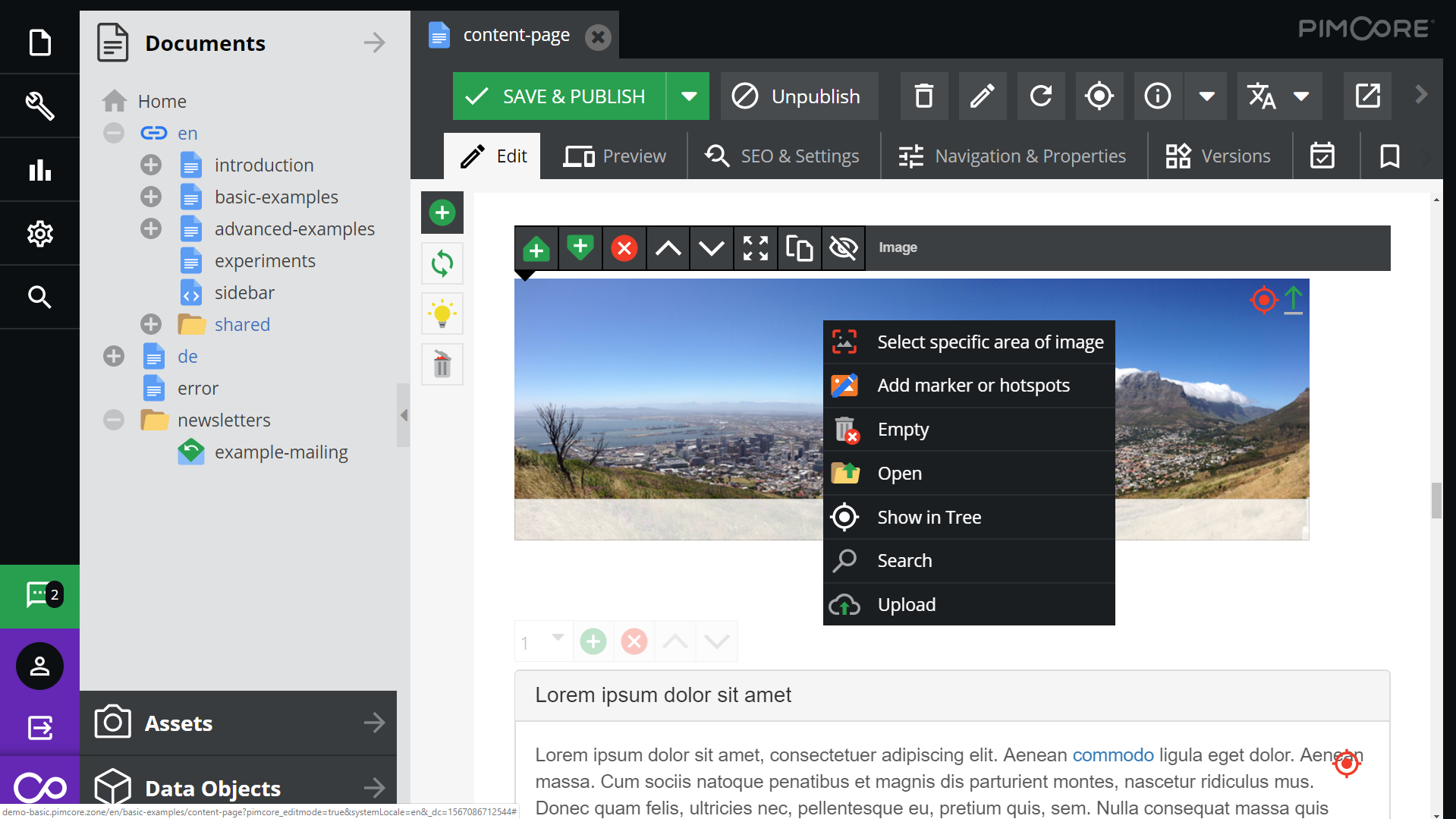
Image courtesy of Pimcore
Let’s first stop for a second.
For those of you who are not quite familiar with Pimcore, visit our blog post to find out more about what it’s all about and see what are the benefits of using Pimcore solution for your business!
But for now, let’s move on.
Pimcore consolidates information into a single source and introduces advanced planning into traditional content creation workflows.
This results in transparency across all teams and processes. Complex and time-consuming tasks are accelerated and parallel workflows are made possible.
Pimcore standardizes authoring, delivery and analytics – meaning that the optimization cycle is made faster.
The Bebee team already wrote on why is Pimcores’ web content management way ahead of other web content management systems so – don’t hesitate to take a look at their article!
One of the Pimcore’s CMS specialities is its’ headless content capabilities to solve content challenges. Its’ headless CMS uses its content-as-a-service (CaaS) feature. Content is delivered through an API driven architecture – it works for mobile apps, web apps, social platforms, native apps, IoT devices, and so on.
Its API-driven approach enables Pimcore to integrate with any eCommerce framework. It has enough flexibility to connect with enterprise systems like ERP, ESB, BI, CRM or some other 3rd party app.
One of Pimcore’s specialities is that it has the power to push high-quality data to a wide range of output channels through automated publishing. It can revolutionize the customer engagement for your enterprise thanks to Pimcore being a single-source focused platform with multi-channel publishing ability.
Plainly, all of the content is stored in one central place from which all of it can be easily distributed through any distribution channel.
Content management processes are completely intuitive.
Sounds awesome, right?
Let’s dive into some particular features!
Multichannel content management system
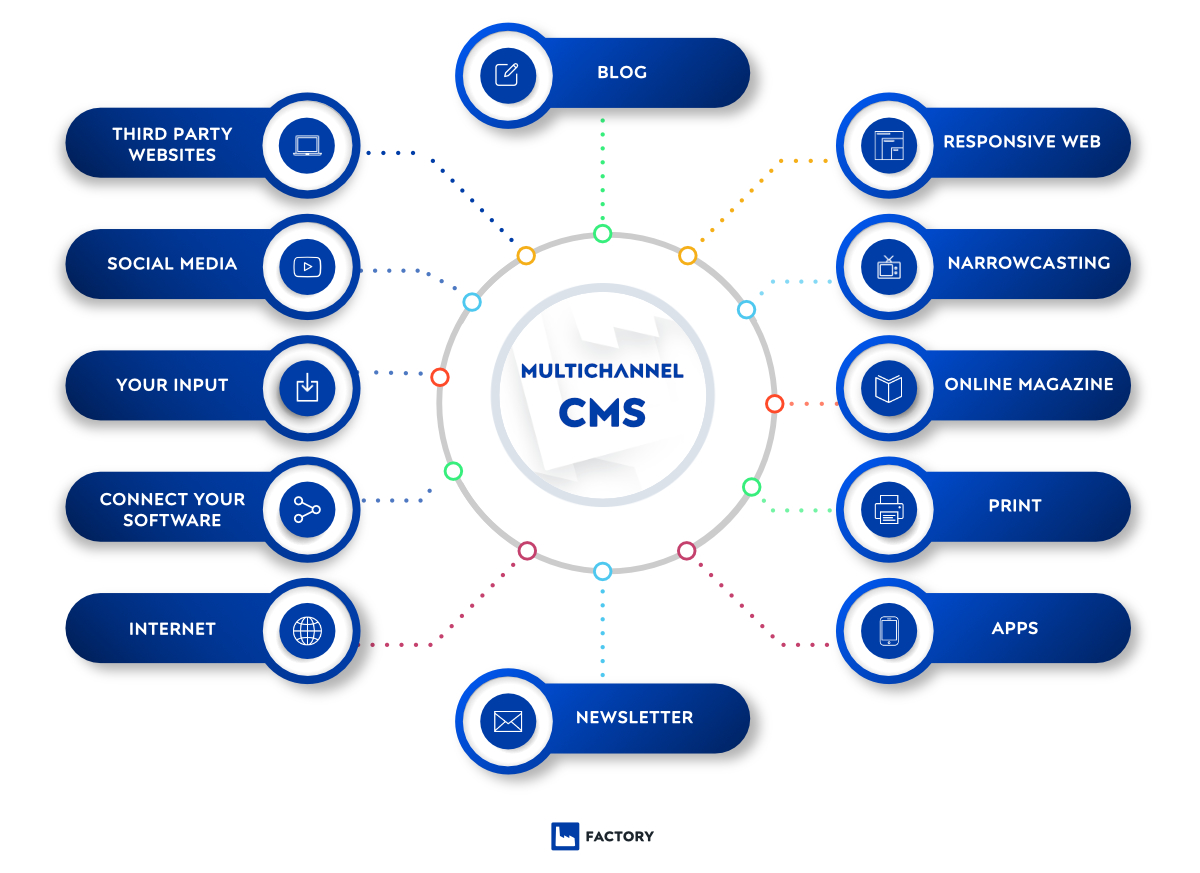
When you communicate with your customers, you don’t want to do it only on one channel. You want to leave a remarkable impression on your customer and provide them with an outstanding experience.
This is where this feature comes to expression. You can automate the publishing process across devices and channels to achieve effortless communication with your customers!
Pimcore’s web content management platform enables you to deliver content to any output channel. Be it social, mobile, mail, commerce or even IoT devices – Pimcore multichannel publishing accompanies customers all the way.
Furtherly, as mobile marketing has become a dominant channel – a need for marketing to mobile users has become imperative. Pimcore provides your mobile customers with a responsive and adaptive content experience.
As for marketing to mobile users, Pimcore provides you with several tools for creating your mobile marketing strategy.
We recommend that you take mobile marketing seriously! Mobile commerce represents the next step in the evolution of eCommerce, and it’s happening right now! In any case, to stay in the loop and be the first one that’s informed about new eCommerce trends, we’ve curated a list of 10 eCommerce blogs that you need to follow!
In addition to that, Pimcore’s web content management system offers you a chance to automate your marketing and sales processes, such as customer segmentation or campaign management. Pimcore is a CaaS (content-as-a-service) provider and lets you utilize its RESTful or native PHP APIs to connect it to your already existing business infrastructure like ERP, CRM or maybe web and mobile applications.
To summarize, you are fully in control of delivering content to your customers via any output channel in any form.
Web-to-print magic
To accelerate the traditional publishing process, printing jobs are automated most efficiently. Pimcore’s web content management system connects your content with the data of MDM, PIM and DAM to achieve this. It allows for faster printing and lowers the printing cost.
Pimcore makes the creation and printing of product catalogs and price lists possible without the use of any publishing software such as InDesign. As all content is stored within Pimcore, all PDFs contain updated information or any master data and high-quality media assets.
The drag-and-drop feature enables you to improve your time-to-market and automate your publishing process by dragging the products directly from product information management system.
Personalized digital experience management
Controlling and improving customers’ digital experience is crucial to upholding your online business – no matter which sector or business model.
By real-time behavioural targeting, you can increase engagement with your customers. That implies providing the right content with personalized offers to the right target group.
For instance, you can segment your customers based on many factors such as browser, country, language, search engine, visited page before, time spent on site, the number of visits and so on.
Thanks to Pimcore’s open-source web content management system, you can engage your customers more effectively.
Combined with Customer Data Platform (or shortly, CDP), you can enrich data, build customer segments and execute marketing automation. This ensures that your marketing activities are entirely data-driven and optimized for maximum efficiency.
Digital experience management is the next step in this industry. An organic shift towards DXP (digital experience platform) is happening as content management capabilities are expanding into the world of digital experience. Stand-alone web content management solutions are falling behind, even though different vendors have tried to adapt and add several capabilities, such as workflows, translation, drag-and-drop and so on.
Move towards DXP is real.
Even though Pimcore’s web content management system is one of its essential products, Pimcore is setting the focus on a wide range of services in its DXP arsenal.
Next in the article, you’ll find out how can you benefit from implementing Pimcore’s web content management system in your business so don’t stop here!
Benefits of using Pimcore CMS
We’ve named the features of Pimcore CMS, but the real question you’re asking yourself is – how can my business benefit from all of this?
Benefits of Pimcore CMS are:
- Digitalization of marketing technology
- Improvement of ROI
- Better management of personalized experiences
- The fusion of content, commerce and context
You can already see through which feature you can experience any of these benefits. It’s pretty much straightforward.
In any case, let’s move on to the first benefit and elaborate on it.
Digitalization of marketing technology
Digitalization of marketing technology focuses on predicting the customers’ evolving needs. This is done by streamlining all the processes, tools, operations and data for the benefit of the customer.
Customers must have a positive experience on their preferred channel, device and time, as it will positively influence their shopping behaviour.
To engage with the customers optimally, marketers need to adjust and optimize their activities continuously. Pimcore’s open-source CMS platform enables marketers to personalize all of the digital content by integrating it with commerce and community.
And what do they gain by doing that?
Omnichannel enablement.
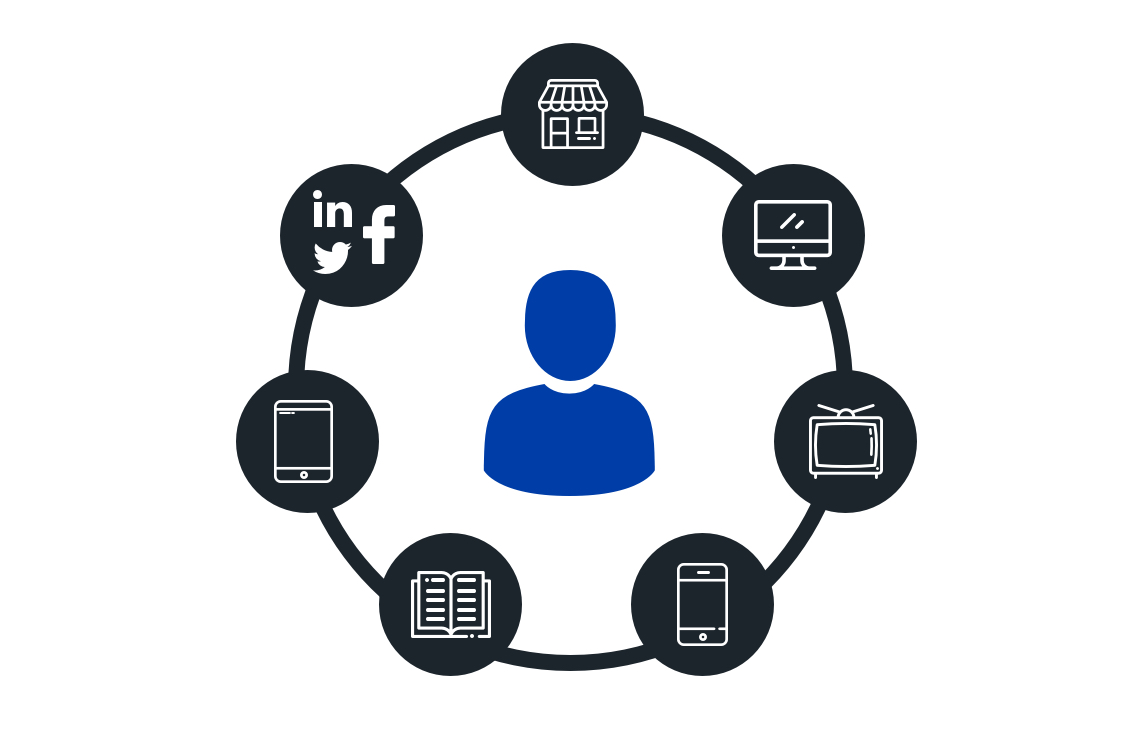
Easily one of the most important benefits on the list. You can deliver any kind of content to any channel or device via Pimcore’s API-oriented architecture. It allows you to be everywhere!
If by some chance you’re still not familiar with the term “omnichannel” and how it affects retail – take a look at our blog post about omnichannel retail and benefits of digital transformation!
You need to deliver customer-focused and uniquely tailored content across several channels and devices? No problem. Omnichannel itself represents the future of online businesses and its’ primary focus is on the ultimate customer experience.
We already wrote an article on the benefits of Pimcores’ omnichannel enablement and building an omnichannel strategy. That’s one of those must-reads so don’t miss out on that one!
That seems really really useful, doesn’t it?
Now, let’s see what do the marketers gain from the digitalization of marketing technology.
Multichannel marketing automation is also one of the gains, so let’s explain that for a bit. Pimcore’s marketing automation framework enables enterprise marketing and sales processes by delivering the right content at the right time through the right channel to the right customer.
Pimcore enables you to segment your customer, personalize your approach and engagement, optimize your campaigns and integrate customer data. It’s an all-in-one tool for marketers.
Next, we’ll see how can you increase your return on investment.
Improvement of ROI
By combining Pimcore’s web content management system and eCommerce module, there can be some serious advantages when it comes to ROI. Pimcore’s web content management system is powered by a single user interface for PIM, MDM, DAM and eCommerce.
Let’s see how Pimcore’s CMS can lower your IT expenses!
First of all, there is no license or subscription cost. Ever! Software licensing and subscription fees are a common feature and their absence directly improves the overall ROI!
Since Pimcore is open-source, there’s no vendor lock-in. That means that you can carry out the development of software in-house or choose your IT vendor. This again decreases the overall cost of ownership.
Better management of personalized experiences
Personalized digital experience management has become essential for any effective growth strategy today. To achieve highly relevant and individualized customer engagement, it’s mandatory to carry out detailed customer research.
To provide optimal customer experience, insights gained through customer research are reinforced by apt technology solutions.
Pimcore’s personalization is rule-based, meaning that the performance of your online business is completely data-driven. Pimcore creates user profiles, studies their behaviour and carries out a thorough analysis.
On top of that, Pimcore’s personalization is AI-powered. Pimcore CMS works together with its customer data platform (CDP) to provide the artificial intelligence-powered personalization. To achieve this, content and its delivery are controlled to ensure that the delivered content is precisely targeted and contextual.
Also, to avoid data silos and idling in general, it’s possible to pair Pimcore CMS with MDM product of Pimcore which consolidates all data in one single source. We’ve already spoken about data silos on our blog so don’t hesitate to take a look!
The fusion of content, commerce and context

To provide highly personalized customer experience, three dimensions need to be integrated:
- Content
- Commerce
- Context
The alignment process starts with gathering real-time contextual data, gaining new insights into customer behaviour, designing the customer journey, gathering feedback and optimizing this whole process.
Pimcore’s CMS can integrate with any eCommerce framework. As such, it’s the only open-source experience management platform that ties content, commerce and context.
As we said, Pimcore CMS can integrate with any 3rd party commerce platform. The integration is made possible thanks to the unified APIs which bring together various systems without any bigger changes in the existing IT landscape.
In essence, whether you have a Magento eCommerce website or even Shopify eCommerce website, you can integrate them with Pimcore web content management platform!
Or even better, use Pimcore as your next eCommerce solution! We prepared for you an overview of Pimcores’ eCommerce capabilities so take a look and see for yourself why is it that great!
If you’re still unsure about the whole eCommerce story and how can eCommerce benefit both business and the customer – we’ve got you covered! We’ve gone in-depth in our blog post about eCommerce so check it out!
We’ve told you more about how you can benefit from implementing Pimcore in your online business. Now, let’s see how some of the companies leveraged the Pimcore’s CMS platform!
Successful companies are already using Pimcore CMS
Let’s take a look at some examples of implementing Pimcore CMS!
Burger King and Deutsche Bahn are two companies in two completely different markets. They both had needs for a better web content management system and their choice was Pimcore!
Pimcore easily adapts to any kind of business in any kind of industry – as long as it’s online!
Without further ado, let’s dive in!
How did Burger King conquer the online world with Pimcore CMS?
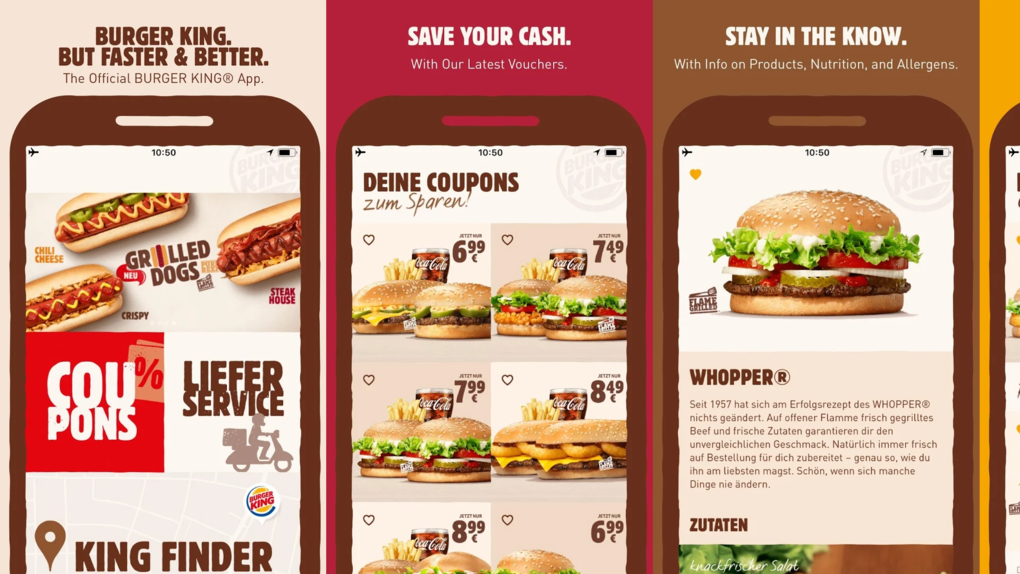
You have definitely heard of Burger King.
One of the most popular fast-food chains in the world with more than 17 000 restaurants.
Why would they implement Pimcore and how did they benefit from it? European branches needed a user-friendly solution so they could build and manage their content, upload images and other types of content as new products and offers are being released.
Also, they have a mobile app and they needed the ability to send push notifications to their users when a promotion is active.
Another challenge they faced was separating the different country’s web content as it differs from region to region, including products, promotions and languages.
So, what happened next?
Pimcore provided a multi-lingual web content management solution for European branches. With this kind of solution, it was no problem to manage the local Burger King websites in all European countries.
The solution served as a single source of content for multiple websites and applications for each region. Shortly, they could share their content between countries and cooperate whenever it’s needed.
As for the mobile app, with a simple plug-in, they can now quickly notify their customers via push notifications and advertise their coupons and campaigns.
All of the data is located in one place, making content management process a lot simpler and a lot more efficient.
How did the implementation of Pimcore CMS result? It resulted in an increase in revenue and sales! With their professional and intuitive websites, Burger King managed to increase their customers’ loyalty.
This example shows that you can easily boost your efficiency. With Pimcore, there is no need for complicating. All that stands between the right message and the right customer are just a few clicks.
Let’s move on to the next example! For some, it may be even more exciting than this one.
Biggest infrastructure owner in Europe uses Pimcore to improve their customer experience
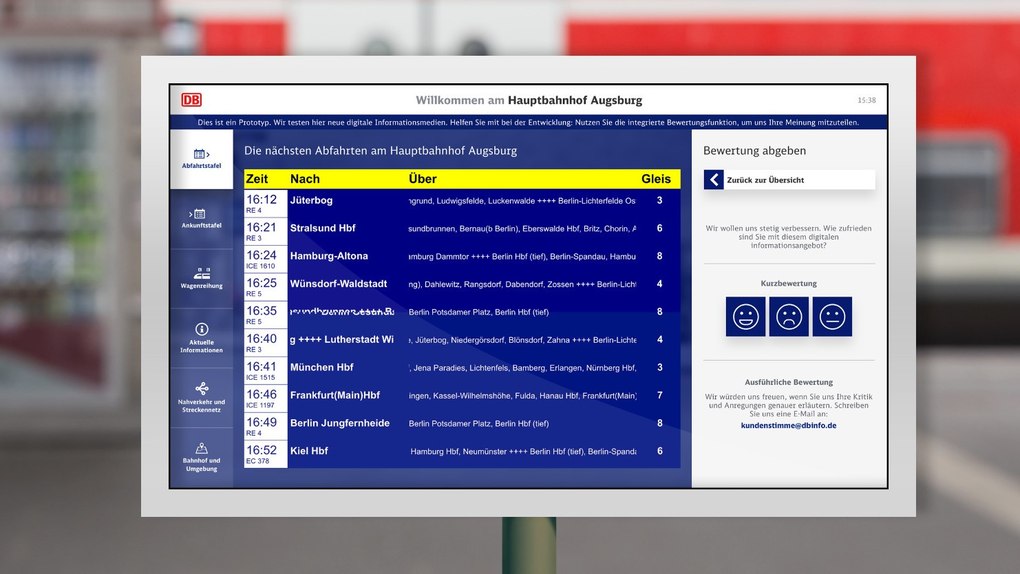
Deutsche Bahn, the second-largest transportation company in the world. What was the reason for their switch to Pimcore?
Let’s see!
With the exponential rise of modern technologies, Deutsche Bahn identified a new rising need amongst its customers. They needed to implement advanced technology in their public services.
They wanted to sum up all the data, such as train departures, delays, station maps and all of the similar data into one system and publish them to different channels.
If you’ve got this far, your first thought is probably – Pimcore seems like an ideal solution for this problem! And you’re not wrong!
They chose Pimcore because it has the ability to gather information quickly and distribute the content in a fast and flexible way. Dashboard which was used by service agents provided them with quick insights and on the other hand, self-service terminals (IoT devices) were used directly by the customers.
Let’s take a look at the results!
The customers could now navigate through all of the offered information on the interactive screens. Now they have access to all of the current travel information such as delays, arrivals, tariffs, car status displays, local area maps and much more.
Thanks to the new digital signage solution, there is now an additional distribution channel, allowing for real-time omnichannel delivery of relevant content.
This solution was so good that it won the “Solution of the Year” award at Pimcore’s partner conference in 2017!
I want to use Pimcore CMS too!
By now, you have seen the capabilities of Pimcore’s web content management system. You can probably already imagine how it would suit your business – and that’s great!
It shows that you’re serious about maximizing your business results and providing your customers with a great experience!
The emphasis of Pimcore CMS is on delivering the right content to the right customer at the right time, and that is one of the essential aspects of a successful online business!
Dare to take your content management on the next level and secure yourself and your customers with what they deserve!
We hope that this was an enjoyable read and that we succeeded in bringing you closer to solving your content management issues.